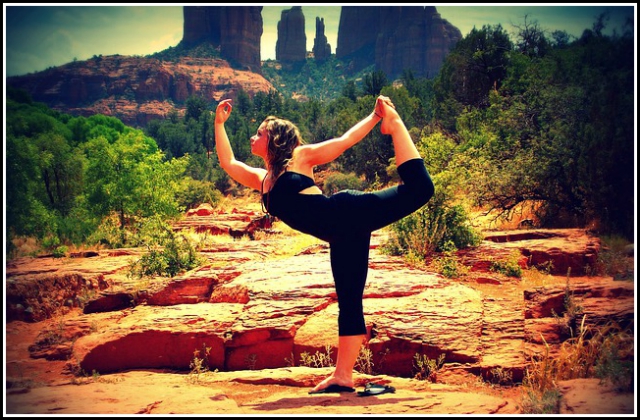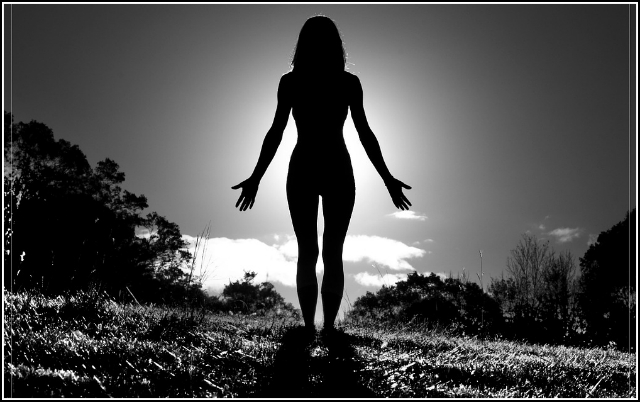A decade ago, you’d have a better chance of seeing me in a knitting workshop than in a yoga class. Even the word “yoga” freaked me out.

But the times, they are a-changing!
Now I look past the neon yoga pants and mindfulness empowering yogi rah-rah to use it to help my running.
I’ve since attended quite a few yoga classes – from Bikram, Hot, and even Vinyasa yoga. But more often, I prefer a short yoga routine at home – just press play and you’re ready to start.
Even a quick 10-minute yoga sequence can help improve your flexibility, mobility, and even core strength. It’s a fantastic complement to running if used strategically – and today I want to share that strategy with you.
I also have an exclusive routine that was created by yoga pros just for Strength Running so read on…
Why Should Runners Do Yoga?

First, I don’t think yoga is necessary for runners. It’s a “nice to have” rather than a “must have” like strength training.
But if you have the time and willingness, a short yoga sequence 1-2 times per week can be a nice addition to your running program.
After a few weeks of consistent yoga, you’ll experience:
- Improved flexibility (most of us are too tight, but the super flexible shouldn’t worry about more flexibility)
- Lower stress (you can only recover from so much stress at one time, whether it’s from work, family, or running)
- Increased strength (not quite as much as a dedicated strength workout, but it can be helpful)
- More mental focus (you can always be more mentally tough!)
Those strength and mental toughness benefits can translate directly into faster race times. Lauren Fleshman, a pro runner for Oiselle, has said:
“Yoga helps me control my emotions while I’m in discomfort on the road. Enduring an intense pose is a lot like enduring a long run or tempo run.”
She even recommends yoga for “core awareness” after an injury in this post about returning to running after an injury.
Yoga is quite restorative – there’s no impact forces and gentler forms of yoga can be effective active recovery. And like bodyweight strength exercises, there’s little risk for injury as long as you’re not over-extending yourself in an advanced yoga pose.
Fore more detail on the health benefits of yoga, check out this comprehensive summary by Julia Belluz (who read more than 50 studies to prep for the article).
What Equipment is Needed for Yoga?
If you’re simply doing yoga workouts at home, you don’t need any quipment! Just wear running shorts and get a towel and you’ll be fine. Easy as pie.
But if you’re attending a class at a studio or want to get more involved with yoga, some equipment may help:
Yoga mat. I reached out to a friend of mine who’s a trained yogi for her favorite yoga mat brand. She prefers Lululemon. Here’s what she said:
My Lululemon mat is the best purchase I’ve ever made! It’s thick which is awesome for your knees and it’s really grippy, which feels awesome to practice on.
It is a bit hard to clean so I would recommend a dark color. Jade and Manduka mats are also awesome!
These tend to be a bit expensive, so it’s only worth it if you’ll be doing yoga regularly. If not, a more affordable mat (like this one) will work just fine.
Yoga pants. Another “nice to have,” they’re mostly for women and not absolutely necessary. They are quite functional and guys everywhere will love you if you decide to invest in a pair, though.
Might I recommend this ridiculous pair? You definitely won’t get hit by a car crossing the street…
Yoga block and strap. A block can help you with deeper poses by adding stability and support when you’re not quite ready for a more advanced pose. A strap works in a similar way, by extending your reach to hit more difficult poses.
You don’t really need any of these accessories, but they can be helpful if you practice yoga more than once or twice per week.
How to Schedule Yoga in Your Training

Since you’re a runner, I’ll assume that running is the priority. That means any cross-training must support running instead of detracting from it (this is why CrossFit or stop and go sports like soccer aren’t great options for runners).
Follow these general rules to ensure you’re programming yoga correctly into your training:
- Yoga should come after running rather than before it. Always prioritize the primary form of exercise first.
- Most runners should do relatively easy yoga so include it on easy days (to keep your easy days easy and hard days hard)
I also reached out to Sage Rountree, one of the world’s leading authorities on yoga for athletes. She’s the author of six books, including her latest Everyday Yoga, and has consulted with Olympians, NFL teams, and the NBA.
Her advice is to plan yoga based on where you’re at in your season (here’s how to plan a season):
Everyone will benefit from the right STYLE of yoga to match their point in the training cycle.
In the off-season and early base, a stronger style of yoga is OK, but as the goal race approaches, and especially in the taper, runners need to stick to gentle and restorative yoga so they don’t jettison all their hard work by overdoing it on the mat.
And she agrees in the “easy days easy, hard days hard” philosophy of training:
I suggest grouping like with like—do your more vigorous yoga practice on your moderate-workout days, and an easy practice on your rest days.
Otherwise, you’ll be making every day medium intensity. Better to group the rest with the rest and the work with the work.
She also has dozens of runner-specific yoga videos that you can use in your training.
The Best Yoga Poses for Runners
Many types of yoga can benefit runners, but my preference is yoga that focuses on the major running muscles: the hips, glutes, hamstrings, and hip flexors.
These “primary” muscles drive most of the power in your running stride and they’re also the muscles that get weak or tight from our sedentary lifestyle.
This is exactly why runner-specific strength routines like the ITB Rehab Routine or the Standard Core Routine are so effective – they target the specific needs of runners.
And today, I’m excited to bring you a new routine:
I partnered with YogisAnonymous.com (they have thousands of online yoga videos you can accesss wherever and whenever you want them) to create this exclusive routine just for SR readers.
I hope you enjoy it!
If you’d like more strength, core, and dynamic flexibility routines, here are my four favorites:
- Mattock Dynamic Warm-up
- ITB Rehab Routine
- Standard Core Routine
- Tomahawk Medicine Ball Workout
- More routines can be seen via my free injury prevention course
Integrating short, runner-specific workouts like these into your training can have profound effects. With more strength, functional flexibility, and stability your injury risk will plummet.
After all, you have to be a good athlete to be a good runner.
You’ll then be able to run more mileage, enjoy better consistency, push yourself to new heights, and ultimately race faster.
Who doesnt’ want that?